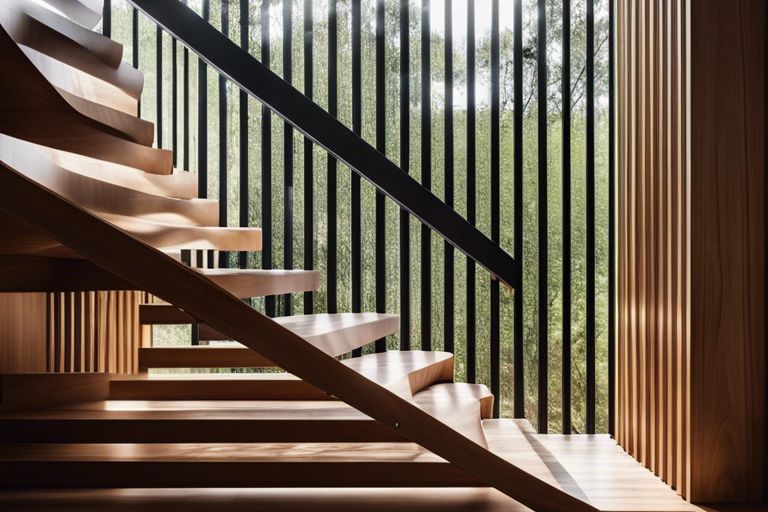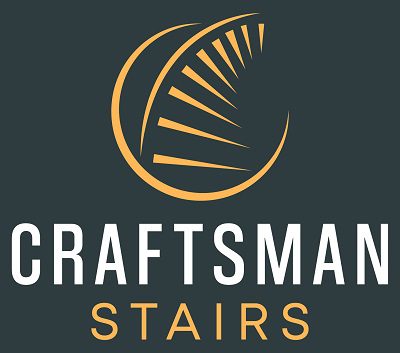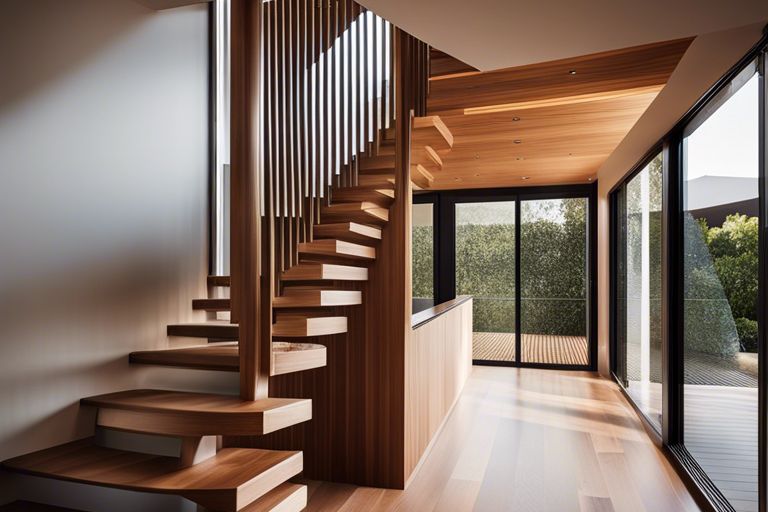You may be considering a timber staircase for your home in Australia, but have concerns about its durability and longevity in our unique climate. Timber staircases are a popular choice due to their timeless appeal and natural beauty, but it is crucial to understand how to ensure their durability in our specific environmental conditions. In this blog post, we will probe into the factors that affect the lifespan of timber staircases in Australia, explore the best practices for maintaining their durability, and provide valuable tips to help you make an informed decision for your home.
Key Takeaways:
- Timber staircases in Australia are durable: Timber staircases are known for their durability and resistance to wear and tear, making them a popular choice for residential and commercial properties in Australia.
- Proper maintenance is crucial: To ensure the longevity of timber staircases, it is important to regularly maintain them by cleaning, sanding, and resealing the timber as needed.
- Climate can impact durability: Australia’s varied climate can affect the durability of timber staircases, with factors such as humidity and extreme temperatures potentially impacting the wood over time.
- Quality of timber matters: Choosing high-quality timber for staircase construction can significantly impact its durability, with hardwoods like jarrah, blackbutt, and ironbark being popular choices for their strength and longevity.
- Professional installation is key: Hiring experienced professionals for the installation of timber staircases can ensure they are properly built to withstand regular use and maintain their durability over time.
Ten Facts About Timber Staircase Durability in Australia
- Timber is a popular choice for staircases in Australia due to its durability, aesthetics, and ability to last for generations.
- The most common timbers used for staircases in Australia are pine and oak.
- Building regulations stipulate that staircases must be at least 600mm wide and have a minimum clearance of 550mm between handrails.
- Stairs should slope between 30-38 degrees, and there should be a minimum headroom of 2m.
- A maximum of 18 stairs can be in a single flight before a landing is required, with landings needing to be at least 2m long or change the stair direction by 90 degrees every 36 stairs.
- Key Australian standards that outline staircase design and construction requirements include AS 1657, AS/NZ 4586, and AS 1428.1.
- Hardwood species like Jarrah, Blackbutt, and Australian oak are very durable options for timber staircases.
- Softwoods like pine and cypress are cheaper but less durable options for timber staircases.
- Regular maintenance, including applying a water-based sealant every 6-12 months and inspecting for wear and tear, is essential for prolonging the life of timber staircases in Australia.
- Consulting professional stair builders for maintenance and renovation advice tailored to your staircase can help ensure its durability.
Factors Affecting Timber Staircase Durability
Clearly, several factors play a crucial role in determining the durability of timber staircases in Australia. It is vital to consider these factors to ensure the longevity and quality of your staircase. Some key factors to keep in mind include climatic considerations, wood species selection, maintenance practices, and installation techniques.
- Climate: With Australia’s diverse climate, exposure to humidity, temperature fluctuations, and environmental elements can impact the lifespan of timber staircases. Ensuring the timber is well-suited to the specific climate conditions of your region is vital for durability.
- Wood Species: Choosing the right wood species is imperative for the longevity of your staircase. Different wood species have varying levels of durability, stability, and resistance to decay. Selecting a species that is suitable for Australian climates will help prevent issues such as rotting, warping, or insect damage.
Knowing the importance of these factors can help you make informed decisions when designing, building, and maintaining timber staircases.
Climatic Considerations in Australia
With Australia’s varied climate patterns, it is crucial to consider the impact of humidity, temperature changes, and environmental factors on the durability of timber staircases. Choosing a timber species that can withstand the specific climate conditions of your region will help enhance the longevity and performance of your staircase.
Wood Species Selection for Australian Climates
Timber selection is a critical aspect of ensuring the durability and longevity of timber staircases in Australian climates. Different wood species offer varying levels of durability, stability, and resistance to decay. When choosing a wood species for your staircase, consider factors such as Janka hardness, natural oils, and moisture resistance to ensure optimal performance in Australian conditions.

Design and Construction Techniques
Best Practices in Timber Staircase Design
Construction of a durable timber staircase in Australia begins with careful consideration of the design. Ensuring the stairs are well-proportioned, have adequate support, and are built to withstand the specific climate conditions is vital. Using high-quality timber and following industry standards for construction and installation are key factors in creating a long-lasting staircase that remains sturdy and safe for years to come.
Construction Methods for Enhancing Durability
Best construction methods for enhancing the durability of timber staircases in Australia include proper sealing and finishing techniques to protect the wood from moisture and UV exposure. Incorporating design elements that promote airflow to prevent moisture buildup is also crucial. Additionally, using stainless steel or galvanized metal connectors and fasteners can help prevent corrosion and ensure structural integrity over time.
Maintenance and Preservation
Longevity: Routine Maintenance for Longevity
After the installation of a timber staircase, routine maintenance is important to ensure its longevity. Regularly inspecting the staircase for any signs of wear and tear such as loose screws, cracks, or creaking noises is crucial. Cleaning the staircase with a mild soap and water solution and avoiding harsh chemicals can also help in preserving its condition.
Preservation Treatments and Techniques
The preservation of timber staircases in Australia can be achieved through various treatments and techniques. For instance, applying a protective sealant or varnish can help prevent moisture ingress and insect infestation, thereby prolonging the staircase’s lifespan. Additionally, regular inspections and timely repairs can address any issues before they escalate, ensuring the staircase remains in optimal condition.

Innovations and Future Trends
Sustainable Materials and Eco-Friendly Practices
To address sustainability concerns, many staircase manufacturers in Australia are adopting eco-friendly practices and using sustainable materials in their construction. These materials may include reclaimed timber, bamboo, and engineered wood products. By choosing environmentally friendly options, the staircase industry is reducing its carbon footprint and contributing to a more sustainable future.
Advances in Wood Treatment Technologies
Practices in wood treatment technologies have greatly improved the durability and longevity of timber staircases in Australia. Innovations such as pressure impregnation treatments, heat treatments, and nano-coatings have been developed to enhance the resistance of wood against decay, pests, and weathering. These advances ensure that timber staircases can withstand the harsh Australian climate and maintain their structural integrity for years to come.
EcoFriendly wood treatment technologies not only protect timber staircases from environmental elements but also reduce the need for frequent maintenance and replacement, making them a cost-effective and sustainable choice for homeowners and businesses alike.
FAQ
Q: What factors affect the durability of timber staircases in Australia?
A: The durability of timber staircases in Australia is influenced by factors such as the type of timber used, quality of construction, exposure to weather elements, and maintenance practices.
Q: How can I improve the longevity of my timber staircase in Australia?
A: To enhance the durability of your timber staircase, ensure regular inspections for damage, apply protective finishes, keep the staircase clean and dry, and address any issues promptly.
Q: Are there specific timber species recommended for building staircases in Australia?
A: Yes, some timber species like Blackbutt, Spotted Gum, Jarrah, and Merbau are popular choices for building durable staircases in Australia due to their natural resistance to decay and pests.
Q: What maintenance practices are crucial for preserving timber staircases in Australia?
A: Regularly clean the staircase to remove dirt and debris, avoid exposure to excessive moisture, inspect for signs of wear or damage, and refinish the timber as needed to maintain its integrity.
Q: How can I protect my timber staircase from termite damage in Australia?
A: To safeguard your timber staircase from termite infestation in Australia, use termite-resistant timber species, apply appropriate sealants or treatments, ensure proper ventilation, and conduct annual termite inspections.
Advice & Actionable Tips
- Use durable timber species like hardwoods for your staircase, as they are more resistant to wear and tear.
- Apply a water-based sealant every 6-12 months to protect the timber from moisture and UV damage.
- Install slip-resistant treads to prevent accidents on slippery surfaces.
- Inspect for wear and tear regularly, especially on high-traffic areas, and repair or replace damaged sections.
- Sweep or vacuum regularly to remove grit and dirt that can scratch the surface.

